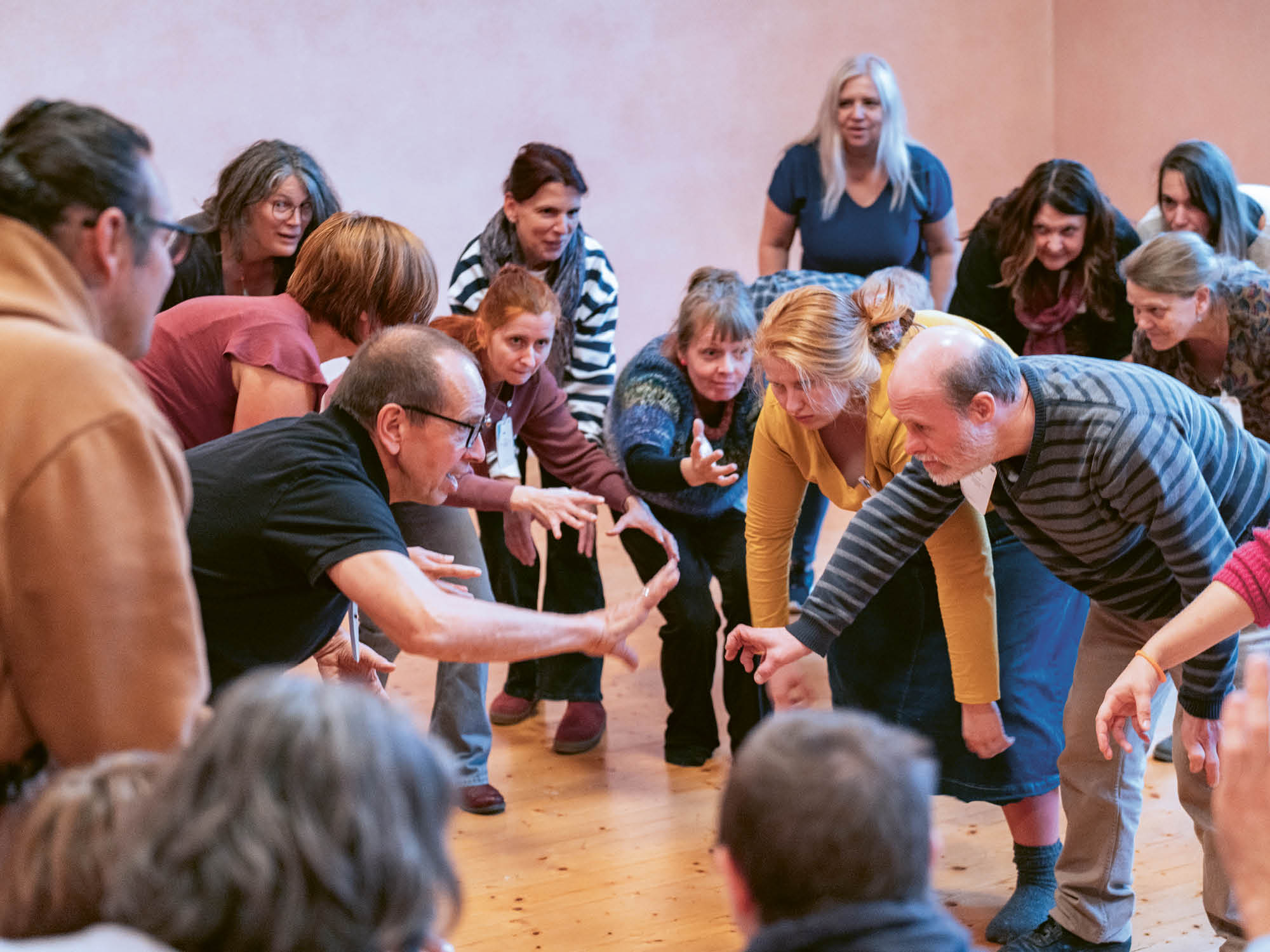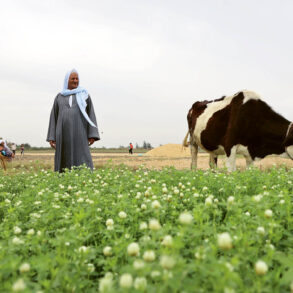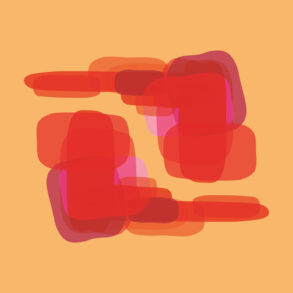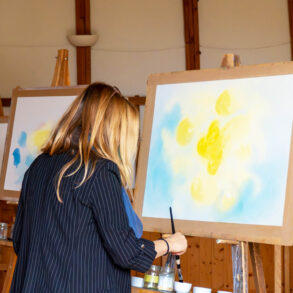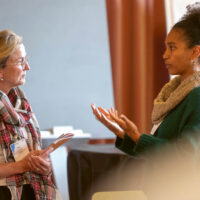Many communities are at a threshold where inclusion is taking on new meaning and challenging familiar ways of doing things. At the Inclusive Social Development conference in Dornach, in October 2024, Oliver Koenig spoke about the opportunity for transformation through inclusion and how we can integrate it into our present.
I want to begin with a brief thought experiment. Imagine standing at the edge of a biodynamic garden that you’ve been tending for years. Looking back, you feel a sense of pride. You see strong plants with deep roots, reflecting the care and dedication that have sustained this garden over time. Now, as you look ahead, you see an adjacent piece of freshly tilled land. The soil is new, inviting you to consider not just what might grow there, but also how you will engage with this new space in the future.
This garden represents the process of becoming—or, more precisely, of becoming with. It requires us to reflect on what has come before, to be mindful of what exists at this moment, and to anticipate what is yet to come. Inclusion, as I’ve come to understand it, is much like this garden. It’s not a fixed state but an evolving relationship, where our actions shape not only what grows around us but also how we grow in relation with others, both human and non-human alike.
Inclusion, then, isn’t simply about welcoming people into existing systems. It’s about mindfully cultivating the conditions for shared growth. Without this awareness, we risk perpetuating the very patterns we aim to change. How can we navigate the tension between honoring our past—the legacy that has brought us here—and creating new, more inclusive futures, especially within organizations and communities serving people with support needs?
This is where the Three Horizons model comes in—a framework developed by the International Futures Forum and thinkers like Bill Sharpe and Anthony Hodgson. Three Horizons thinking can bring greater awareness to our collective processes of future shaping—not as something distant, but as something that is always already unfolding. It opens up new opportunities to approach what we do with greater understanding, care, and attention. It ensures that what we aspire to achieve is reflected in the actions we take today.
Inclusion has become a buzzword, often co-opted by neoliberal agendas that promote a narrow view of what it means to be human. For those unfamiliar with the term, neoliberalism refers to a political and economic philosophy that prioritizes free markets, competition, and efficiency—often at the expense of social equality. As the educator Henry Giroux has pointed out, neoliberalism fails to create a model of inclusivity that empowers people outside of market-driven values. Inclusion, then, is measured by how well people can fit—or be made to fit—into existing systems without causing too much disruption. This narrow form of inclusion prioritizes those who are easiest to accommodate, leaving those with more complex needs on the margins.
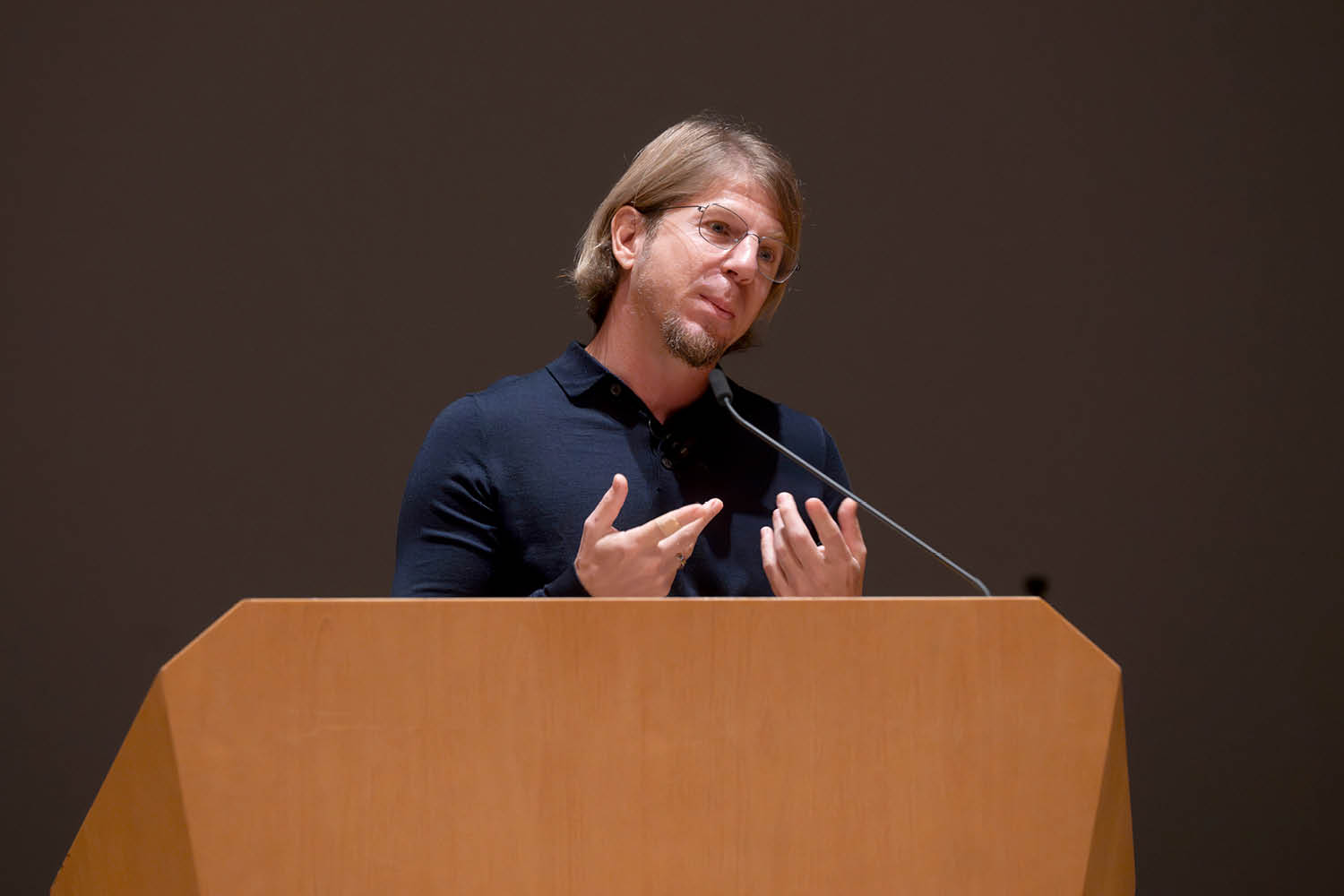
Does inclusion always reduce inequality? The key question we often overlook is: Inclusion into what? Are people being welcomed into systems that are truly equitable, or into structures that still uphold exclusionary practices? As Sara Ahmed (2000) argues, welcoming those deemed “different” often ends up reproducing their marginalization. Inclusion may seem generous, but it can also position those being included as “other,” while leaving systems of privilege intact. This creates an ambivalence where inclusion and exclusion work together, resulting in spaces that appear inclusive but still maintain underlying hierarchies of power.
Anthroposophy has long emphasized the inherent dignity and individuality of each person. Rudolf Steiner’s approach laid the foundation for a transformative and holistic approach to care and development. In this sense, anthroposophical work holds immense potential for fostering inclusion. Yet historically, anthroposophical institutions have also engaged in practices that unintentionally mirrored exclusion. The Camphill movement, for example, founded by Karl König in 1939, embodies this tension. Created as a response to dehumanizing asylums, Camphill offered a new vision of a “lifesharing” community where individuals with special support needs lived and worked together with others. While this model and its rejection of institutionalized care was profoundly inclusive for its time, it also unintentionally created insular communities. Though these communities provided care and belonging, they also isolated residents from broader society, limiting inclusion within the boundaries of the community. Today, many anthroposophical communities are actively addressing this issue, seeking ways to transcend this binary and foster more open, interconnected forms of inclusion.
The Three Horizons Model as a Sensing Tool
How can anthroposophical communities navigate the complexity and ambivalence of inclusion while staying true to their holistic values? First, by acknowledging that these tensions exist. Second, by engaging in practices that address them directly and by being attentive to the small openings and cracks where new possibilities for inclusion can emerge.
The Three Horizons model provides a simple yet powerful framework and practice to guide this process. Instead of seeing the future as something distant, the model helps us to recognize that different “horizons” of the future are always present at the current moment and that each horizon brings its own unique quality of time, awareness, and potential.
Horizon 1: The Familiar Present
In Horizon 1, we explore and describe the present system, recognizing both its valuable legacy and the aspects that may have become dysfunctional over time. We identify the dominant patterns of behavior, practices, and mindsets shaped by years of tradition and experience.
The phenomenological quality of Horizon 1 is one of routine and predictability: the day-to-day processes and activities that keep our lives, teams, organizations, and communities running. Time in this horizon is experienced as a resource, something that we generally do not have enough of, and which thus needs to be managed and monitored. Decisions are made based on necessity. While Horizon 1 provides stability, it also tends to resist the deeper changes needed to unlock the transformative potential of inclusion. We operate within known parameters, maintaining—and, at best, optimizing—what we already do.
Horizon 1 is also where the legacy of exclusion and the ambivalence of inclusion within anthroposophical communities play out. It is where our practices reflect broader social and cultural forces, such as the pervasive influence of neoliberalism, which frames inclusion as a mode of optimization rather than a means of addressing systemic inequities. Anthroposophical communities are not immune to these pressures. Dan McKanan, in his book Camphill and the Future (2020), describes how anthroposophical communities have struggled to adapt their lifesharing model to the demands of modern employment structures, driven by regulatory and financial constraints. While these changes ensured compliance, they also led to fragmentation and sometimes ideological tension. Attending to Horizon 1 asks us to critically examine our internal practices as well as the external pressures shaping them. Without such an honest appraisal, transformative work toward inclusive futures is compromised from the start.
Horizon 3: The Future Vision of Inclusive Communities
Horizon 3 calls on us to intentionally leave the limitations of “what is” behind and fully commit to exploring “what could be.” It’s not just about envisioning a new future but embracing the brave and radical task of reimagining inclusion as something beyond the narrow constraints of existing systems and opening up a space where contribution can take many forms. It’s an invitation to step away from the familiar and engage in the cultural practice of imagining—a practice that, in the presence of dominant structures, often requires courage.
In Horizon 3, time is no longer a resource to be managed but a moment of possibility unfolding—a space where the future feels open, and new potentials are waiting to be realized. It’s here that we can move beyond the urgency of productivity, pause, and reflect on what really matters: “What could inclusion look like if it were truly rooted in our deepest values?”
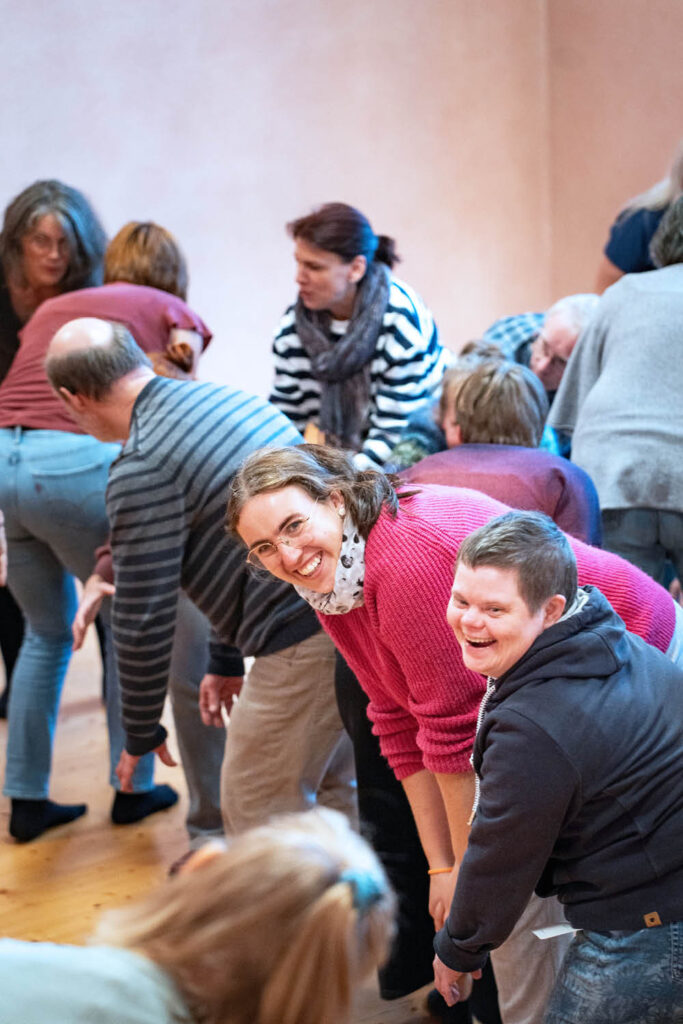
Horizon 3 embodies aspiration, where we dare to envision a radically different future for anthroposophical communities. One compelling example of Horizon 3 thinking is the project “In Guter Gesellschaft (In good company)” by Anthropoi—the German Association for Inclusive Social Development. This project envisioned a future where people with diverse abilities can equally participate in and contribute to shared communal spaces. In this vision, anthroposophical communities act as catalysts for building truly inclusive societies by inviting collaboration with people and forces in the wider community and by modeling how sustainable living and working environments can be woven together, ensuring that the value of each individual enriches the whole. Just as Horizon 1 calls for an honest appraisal, Horizon 3 demands that we embrace disruptive visions; without boldly reimagining what could be, we risk remaining trapped in the patterns of the present.
Horizon 2: The Transitional Space of Tension and Innovation
Between the stable practices of Horizon 1 and the visionary ideals of Horizon 3 lies Horizon 2—the messy and creative space of transition. This is where the present and the future intersect, where new ideas and practices emerge, where old systems are questioned, and where we actually start doing things differently. Horizon 2 is the space in which many anthroposophical communities find themselves today—navigating the balance between their established practices and their aspirations to create more inclusive, transformative futures.
The phenomenological quality of Horizon 2 is that of experiment and creative realization. Time in this horizon is neither strictly managed like in Horizon 1, nor entirely open like in Horizon 3. Instead, it is a moment of practical wisdom and action, where we make choices based on both present constraints and future possibilities. It’s where we consciously hold the tension between the familiar and the unknown, using our judgment to decide which parts of our systems are worthy and need care to preserve, which parts we need to rethink, and which innovations are needed to help us move closer towards Horizon 3.
Anthroposophical communities find themselves in Horizon 2 when they start asking tough but necessary questions: How can we move beyond the legacy of separation without losing the strengths of our holistic model? How can we ensure that inclusion is not just a surface-level change, but a transformative shift in how we understand and support each person’s unique potential? Yet, asking these questions is only part of the work—what’s equally critical is pairing this perspective with practical action. Truly embodying inclusion means confronting the concrete and deeply political tasks of accessibility, representation, and—at times—reconciliation, as some anthroposophical communities have already begun to do. As Kurt Lewin observed, we can only truly understand systems when we begin to change them. Doing things differently brings deep-seated assumptions to the surface, and only by engaging with and reworking these assumptions can transformative initiatives move beyond the superficial and avoid becoming stuck. It takes courage and openness.
Future Consciousness: A Shared Cultural Practice
What makes the Three Horizons model so powerful, is that it demonstrates how all three horizons are always present simultaneously. These horizons aren’t separate phases of time but different qualities of the future, co-existing in the present moment. Within any collective, these horizons are in constant movement and interaction, reflected in the diverse attentions of its members. Three Horizons thinking isn’t about judging one horizon as right or wrong, better or worse, but about noticing how all three operate and engaging them in fruitful dialogue.
By mastering the art of bringing these different qualities into conversation and creating actions that bridge them, we cultivate what Bill Sharpe calls “future consciousness”— the ability to act within the complexities of the present while being aware of and guided by latent possibilities for the future. Crucially, future consciousness isn’t an individual skill but a shared cultural practice. Like language or music, we can only learn and develop it together. Through collective practice—dialogue, experimentation, and reflective judgment—we build the capacity to navigate between horizons and bring about what we truly care for.
In this collective practice, including everyone’s voice is essential. Creating intentional pauses, allowing moments of reflection, and practicing Entschleunigung (slowing down)—matching the pace of those most affected—is critical. Often, less is more. When we move too quickly, we risk overlooking small openings where new possibilities for inclusion can organically emerge.
Inclusion isn’t a fixed destination, nor just another policy or set of practices—it’s an ongoing, evolving reality, a continuous process of “becoming with.” The Three Horizons model reminds us that the seeds of the future are already present in our actions today. By engaging with our past, challenging the present, and experimenting with new possibilities, we can build more inclusive organizations and communities.
Title image Inside a conference workshop. Photo: Xue Li

